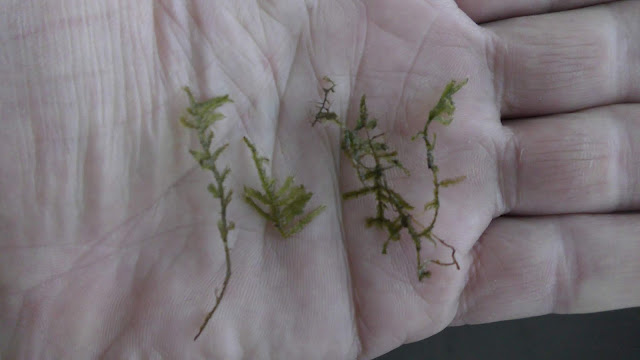Let's anchor it with a piece of driftwood.
I stick it in a hole drilled previously.
I always put all new samples into separate nurseries for observation.
Here, I tie smaller pieces of Java moss to another piece of driftwood using cotton thread.
Use a seashell as a base to hold the driftwood.
It goes into the same nursery for now.
3 weeks later, on April 5th, I move young guppies into this aquarium garden.
Java moss looks nice here.
One month later, on May 5th, I trim long branches of Java moss.
Let's pull it out first.
I keep the old moss attached to the same driftwood.
It goes back into the same nursery.
I am going to use this seashell to anchor the Java moss cuttings.
A broken seashell serves even better for this purpose ;)
It goes into a new aquarium garden I am setting up now.
There is no fish in this aquarium yet.
I let new aquariums sit for a couple weeks or more before adding any fish.
Here is the same aquarium with guppies and cherry shrimp ten days later, on May 15th.
Also, I have ramshorn and ponds snails in this aquarium.
The same aquarium one month later, on June 18th.
All looks well :)
Here you can see the short cuttings of Java moss tied to the stick about 3 months later, on July 30th.
It takes time to grow Java moss.
And it looks better as it grows.
Cherry shrimp like Java moss.
October 27, 2019
It is an approximately 8 month old bush of Java moss.
March 2020
One year old bush of Java moss looks great after Winter.
I am going to use some of the Java moss in a new setup.
Anchor it with a seashell.
Here is the aquarium without fish yet.
More about it in future videos.
Java moss grows slower than Elodea, Hornwort, or Guppy grass making it suitable for long term projects.
Guppy fry and small shrimp like to hide in the mesh of Java moss.
Java moss certainly fits nicely in my aquarium gardens of all sizes.
Have fun and happy aquarium gardens :)






















































No comments:
Post a Comment